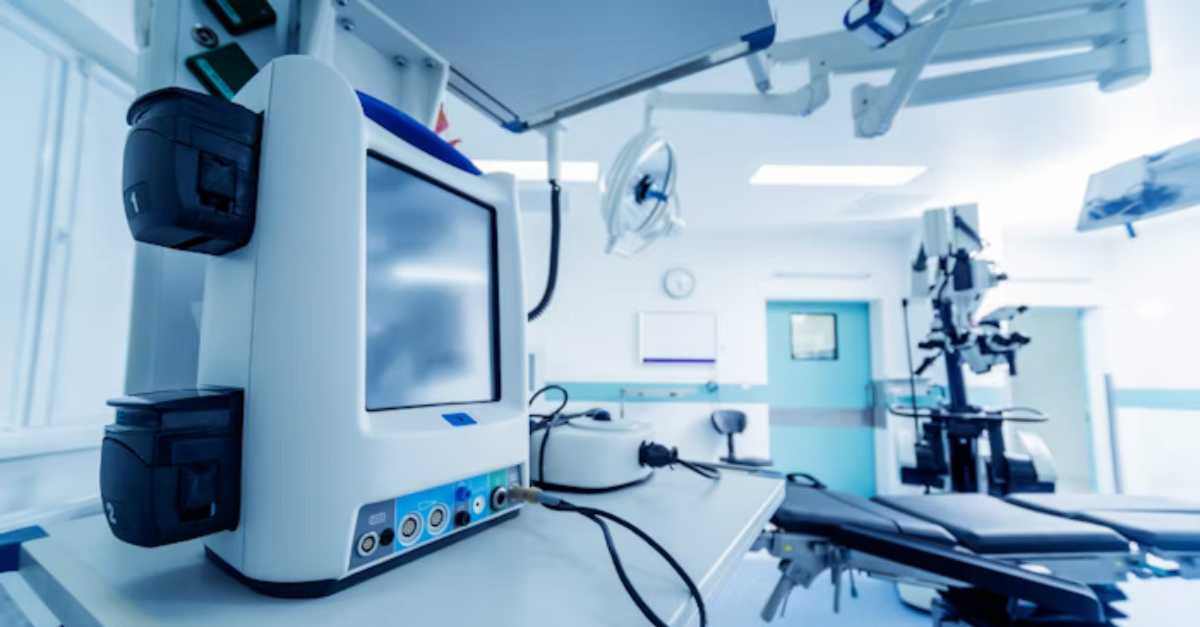
CMMS, EAM, Who Cares?
In many ways, the "CMMS vs EAM" distinction has become outdated and misleading. Here's what you should really focus on when choosing an asset ...
Solutions
Workplace Management Solutions
Real Estate Management Solutions
Maintenance Management Solutions
Energy Management Solutions
Engineering Document Management Solutions
Asset Management Solutions
Automate campus scheduling for classes, meetings, and exams with our EMS software.
Plan and manage conferences effortlessly with EMS software to impress guests and streamline operations.
Boost workplace flexibility and maximize space use with seamless desk and room booking.
Organize workplace or campus events smoothly, creating memorable experiences.
Optimize workspace, manage allocations efficiently, and reduce costs with our space management solutions.
Deliver projects on time and within budget by improving communication, collaboration, and efficiency with our software.
Streamline lease accounting for ASC 842, IFRS, and GASB compliance.
Manage leases efficiently by tracking key dates, analyzing costs, and ensuring compliance.
Centralize data and analytics for better insights, faster negotiations, and revenue growth.
Centralize facility and asset maintenance, automate work orders, and ensure compliance with our CMMS software.
Extend asset life, reduce downtime, and prevent costly repairs with data-driven monitoring.
Prevent equipment failures and extend asset life by detecting and addressing issues early.
Make sustainable, cost-efficient energy decisions by monitoring and optimizing power consumption.
Remotely monitor and control equipment with real-time data to predict issues, boost efficiency, and reduce downtime.
Easily share and collaborate on documents, creating a single source of truth for engineers and contractors.
Manage and analyze assets across their lifecycle to schedule maintenance, reduce downtime, and extend lifespan.
Improve visibility, automate work orders, and ensure compliance for efficient facility and asset management.
Resources
Browse our full library of resources all in one place, including webinars, whitepapers, podcast episodes, and more.
Support
Looking for access to technical support, best practices, helpful videos, or training tools? You’ve come to the right place.
About Accruent
Get the latest information on Accruent, our solutions, events, and the company at large.

A modern, purpose-built CMMS solution can help your healthcare organization improve asset and equipment availability, simplify compliance, enhance cybersecurity, and more.
Table of contents
Most hospitals today use some form of computerized maintenance management system, or CMMS. Many of those systems used today are legacy CMMS solutions that primarily handle work order management and do not integrate with other systems throughout the organization, leading to a cycle of waste and redundancy.
To keep current, healthcare systems need to modernize their CMMS to improve mobile capabilities, enhance reporting and analytics and automate workflows within and between departments. It is also critical that the CMMS be able to manage cybersecurity initiatives, Alternative Equipment Maintenance (AEM) programs, equipment capital planning, and the complete asset lifecycle — going far beyond simple work order management.
A truly modern healthcare CMMS can connect and transform your Healthcare Technology Management (HTM), Healthcare Facilities Management (HFM), Supply Chain, and IT departments to improve the patient experience and ensure ongoing compliance with policies, laws, and regulations.
Healthcare organizations face increasingly difficult financial and operational challenges. While the COVID-19 pandemic continues to take a heavy toll on America’s healthcare infrastructure and operating margins, there are also growing concerns about cybersecurity risks and the effects of an aging technician workforce.
Prior to COVID-19, hospital operating margins were at 1.7%, well below the 2.5% considered sustainable, according to Modern Healthcare. Hospitals have been and continue to be plagued by financial pressures from rising expenses, staffing shortages and inflation. As of August 2024, hospital operating margins have improved somewhat while health system operating margins remain low. According to Strata’s Monthly Healthcare Industry Financial Benchmarks (August 2024), the median hospital operating margin has improved to 4.9% in August 2024 while the median health system operating margin is considerably lower at 1.9%.
Hospitals and clinics across the country are facing the problem of an aging clinical engineering technician workforce. There may soon be a shortage of technicians to maintain and service the growing pool of critical clinical engineering equipment, and not enough young professionals are entering the field. According to the U.S. Bureau of Labor Statistics (2022 data), the median age of medical equipment repairers is approximately 44.5 years. While the aging workforce remains a concern, efforts are being made to attract younger professionals through educational programs and incentives.
There are roughly 50 billion cybersecurity exposures each year through medical devices. Medical equipment is increasingly intelligent and interconnected, leading to cybersecurity risks that legacy CMMS healthcare software just cannot handle.
There is an average of 6.2 vulnerabilities per medical device. Recalls have been issued for critical devices like pacemakers and insulin pumps, with known security issues. As of January 2022, 53% percent of connected medical devices and other internet of things (IoT) devices in hospitals had known critical vulnerabilities, according to the United States Government Accountability Office.
In 2023 alone, the healthcare sector experienced a record-breaking 133 million patient records breached, a significant increase from the 51.9 million breached in 2022, according to the HIPAA Journal. For comparison, 45.9 million records were breached in 2021, reflecting a continuing upward trend in healthcare data breaches. This marks a dramatic rise since 2018, when only 15 million records were compromised. Over just five years, the number of breaches has skyrocketed, highlighting the growing threat of cyberattacks on healthcare systems and the increasing vulnerability of sensitive patient data.
In addition to these challenges, healthcare systems often face:
This leads to inefficiency, decreased revenue and lack of regulatory compliance. A modern healthcare CMMS can help address these issues.
One of the most important advantages of using a modern CMMS is adhering to ever-changing government regulations and maintain high standards during performance audits required by regulatory agencies, such as The Joint Commission, CMS and DNV GL.
A healthcare CMMS helps collate all vital information and generate accurate reports for audits. It also safely stores all the required preventive maintenance (PM) schedules and equipment records in an easy-to-access centralized location for quick retrieval during government audits. A modern CMMS can identify every device that is on an AEM program, run an AEM inventory report if requested by The Joint Commission, perform automated risk scoring to determine which devices should be on an AEM program, and provide ongoing monitoring to prompt for review if those decisions cause failure rates to increase.
In addition to regulatory compliance, a modern healthcare CMMS software solution will also:
Growing competition and slashed budgets require that all hospitals and healthcare facilities work at maximum efficiency to stay competitive and compliant. Investing in a modern CMMS is the easiest way for healthcare organizations to streamline operational efficiency and increase profits while staying compliant with constantly changing policies, laws and regulations and mitigating cybersecurity risks.
For Plant/Operations Managers who want to maintain uptime, Clinical Engineers who value precise data to track asset health and automate services and equipment distribution requests, and IT departments who need detailed information and predictive analytics to ward off medical device cyberattacks, a suite of connected tools, sensors and databases in a modern healthcare CMMS can be as essential as traditional tools and test equipment.
Many healthcare organizations are still operating on multiple legacy and siloed applications. A modern, consolidated healthcare CMMS will:
Hospitals have hundreds of medical devices that are connected to the internet and vulnerable to attack. Properly identifying medical device and equipment security risks is critical to IT. A modern healthcare CMMS can quickly identify significant risks or gaps, and then automate and track remediation or mitigation efforts.
To mitigate cybersecurity risks, a modern CMMS will:
Having customizable and automated planned preventive maintenance (PM) tasks built into the CMMS makes it much easier for your technicians to quickly locate every task that must be completed and ensures they are following all the required activities. It also provides quick access to the required activities if needed for a compliance review.
One of the most important features of a modern CMMS, however, is having the necessary data to create and support a compliant Alternative Equipment Maintenance (AEM) program for your health system. While it sounds simple enough, developing an AEM schedule requires a lot from your CMMS to document compliance that legacy systems do not provide.
The best healthcare CMMS software solutions are mobile-enabled and web-based, managing all aspects of asset management (medical devices, facility equipment and clinical engineering equipment), work order management, financials and expenses, preventive maintenance, risk and compliance reporting, equipment distribution, and more. A modern healthcare CMMS provides:
Healthcare organizations that leverage advanced CMMS and asset management technology can increase utilization rates and break down operational silos. In addition, systems that employ these solutions lower associated costs, increase equipment availability, and offer patients, visitors, and staff a better experience and greater peace of mind.
Beyond technology, Accruent experts are available to evaluate your current processes and key performance indicators, highlighting step-by-step improvement recommendations to make your Healthcare Facilities and Clinical Engineering Departments strategic assets.
Contact us today to start a conversation about how Accruent can help you with your asset management needs.
In many ways, the "CMMS vs EAM" distinction has become outdated and misleading. Here's what you should really focus on when choosing an asset ...
Learn about how smarter healthcare systems can help you save money and provide industry-leading patient care.
Learn all about preventive maintenance in this comprehensive guide! Discover its benefits, implementation strategies, and key considerations.
Subscribe to stay up to date with our latest news, resources and best practices.
* To unsubscribe at any time, please use the “Unsubscribe” link included in the footer of our emails.